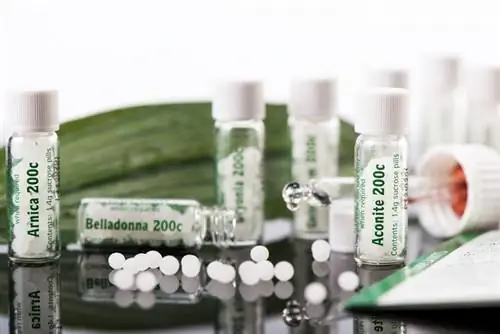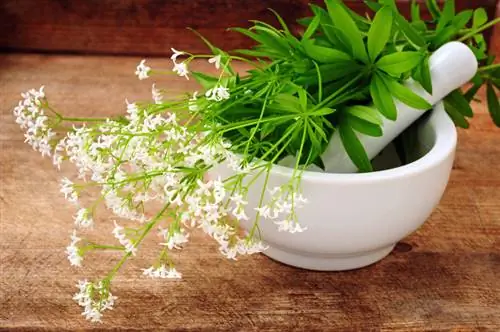- Author admin [email protected].
- Public 2023-12-16 16:46.
- Last modified 2025-01-23 11:20.
The medieval doctor Paracelus summed it up in one of his well-known sayings: Many plants can be medicinal and poison at the same time, the only thing that matters is the dosage. However, monkshood is so poisonous that you should definitely avoid experimenting with it.

What effects does monkshood have on people?
Monkshood has a strong effect due to the alkaloids and alkamines it contains, which can cause burning and numbness when touched. It is used in minimal doses in traditional Chinese medicine and homeopathy to treat rheumatism, nerve pain, inflammation, gout and colds.
Effects caused by mere touch
When choosing a location for sowing monkshood in your own garden, not only factors such as soil quality and moisture are relevant. Many gardeners prefer to plant this perennial tall perennial in the middle of herbaceous beds so that unwanted contact with the plant is less likely. After all, simply touching the flowers and leaves can lead to he alth consequences such as an unpleasant burning sensation and numbness in the limbs. That's why parts of the poisonous plant were used in the Middle Ages to prepare witches' ointments, whereby the burning sensation on the skin is said to have felt like the growth of bird feathers. When carrying out care measures such as pruning, you should wear gloves if possible (€9.00 on Amazon).
The use of monkshood in medicine
Monkshood and its effects were probably already known to scholars in antiquity; from the Middle Ages onwards, the plants of this genus were also used as medicinal and murderous poisons. Even today, certain types of monkshood are used in traditional Chinese medicine and homeopathy to treat the following diseases:
- Rheumatism
- Nerve pain
- inflammatory diseases
- Gout
- Cold
Since monkshood is one of the most poisonous plants in Europe, medical applications should only be made with officially tested monkshood extracts and pharmaceutical products. Even minimal doses of this plant can lead to severe symptoms of poisoning or even death.
Symptoms of poisoning due to the ingredients of monkshood
Accidental consumption of monkshood usually does not go unnoticed, as numbness of the tongue and an unpleasant tingling sensation on the tongue immediately occur. Depending on the amount of alkaloids and alkamines contained in the plant parts or seeds ingested, severe cramps, vomiting and paralysis can sometimes occur. In the case of monkshood poisoning, deaths regularly occur within about three hours of contact with the poison; this usually occurs when fully conscious due to respiratory paralysis in the upper respiratory organs.
Tip
Although monkshood can be found in comparatively many private gardens, serious incidents occur relatively rarely. However, if there are children or pets in your household and garden or if they visit regularly, it is advisable to handle the plants, their seeds or a bouquet of flowers in a vase with particular care.






